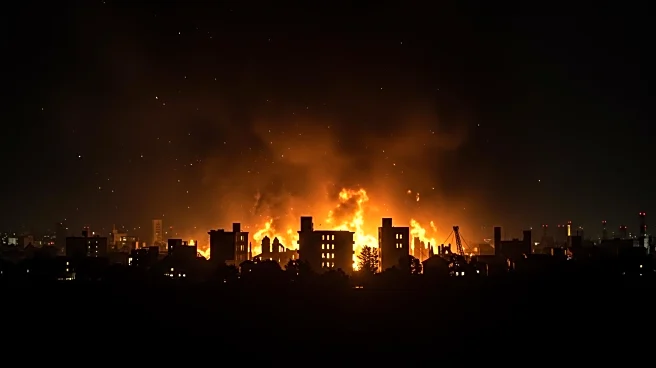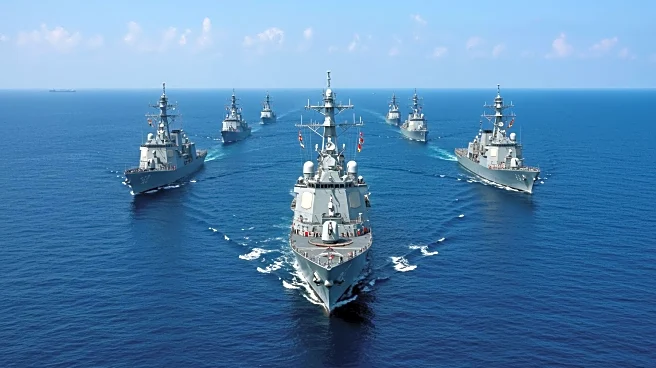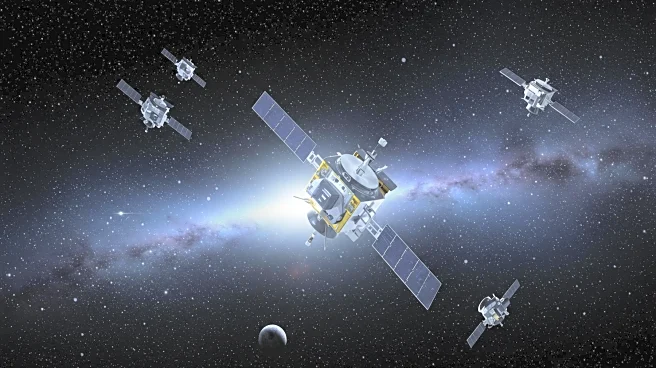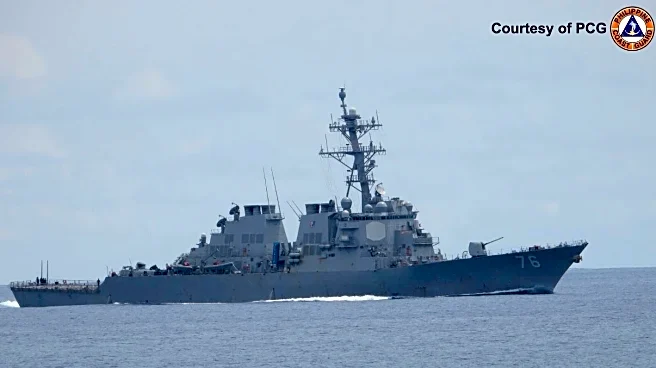What is the story about?
What's Happening?
On the night of August 14-15, 1945, the United States conducted a firebombing raid on Kumagaya, Japan, using almost 90 B-29 bombers to drop approximately 6,000 tons of napalm. This attack resulted in the deaths of at least 260 people, injuries to 3,000, and the destruction of nearly 75% of the city. The raid occurred less than 12 hours before Emperor Hirohito announced Japan's unconditional surrender, marking the end of World War II. The firebombing was part of a broader campaign led by Gen. Curtis LeMay, aimed at crippling Japan's war capabilities by targeting cities with incendiary bombs. Kumagaya was chosen due to its rail yard and airplane parts manufacturing facilities, considered legitimate military targets.
Why It's Important?
The firebombing of Kumagaya highlights the intense and destructive tactics employed by the United States in the final stages of World War II. This event underscores the ethical and moral complexities of wartime strategies, particularly the use of incendiary bombs on civilian areas. The attack on Kumagaya, along with other fire raids, contributed to Japan's decision to surrender, effectively ending the war. The legacy of these bombings continues to influence discussions on the rules of war and the treatment of civilian populations during conflicts. Survivors and historians reflect on the impact of these raids, considering both the immediate devastation and the long-term implications for peace and reconciliation.
What's Next?
As the anniversary of the Kumagaya firebombing approaches, local commemorations and peace exhibitions are planned to honor the victims and educate the public about the historical significance of the event. These activities aim to preserve the memory of the attack and promote peace. Survivors and civic groups continue to share their stories, fostering dialogue on the consequences of war and the importance of preventing future conflicts. The city of Kumagaya, now a symbol of resilience, uses these commemorations to reflect on its past and advocate for a peaceful future.
Beyond the Headlines
The firebombing of Kumagaya raises questions about the ethical dimensions of wartime conduct and the responsibility of military leaders in targeting civilian areas. The event serves as a reminder of the human cost of war and the need for international standards governing military actions. It also highlights the role of historical memory in shaping cultural identity and promoting peace. The preservation of artifacts and personal stories from the bombing provides a powerful testament to the resilience of those affected and the ongoing efforts to learn from history.
AI Generated Content
Do you find this article useful?












